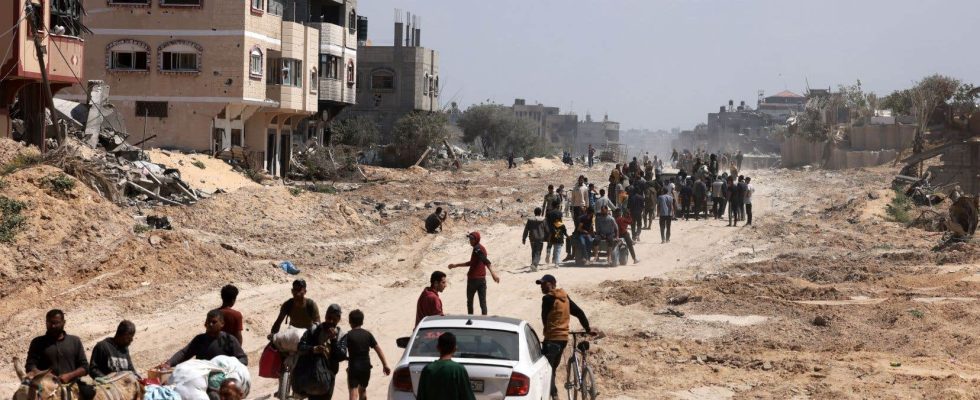Israel withdrew its troops from the south of the Gaza Strip, notably from the town of Khan Younes, after months of fierce fighting against Hamas which caused a humanitarian catastrophe and earned Israel a round of criticism, including from its allies .
“Today, Sunday April 7, the 98e Israeli army commando division completed its mission in Khan Yunis. The division left the Gaza Strip in order to […] to prepare for future operations,” the army said in a statement sent to AFP.
The army said a “significant force” would continue to operate in the small Palestinian territory according to its strategic needs, in the seventh month of a devastating war waged by Israel against the Palestinian Islamist movement Hamas in the Gaza Strip.
“A significant force led by the 162e division and the Nahal brigade continue to operate in the Gaza Strip to guarantee the army’s freedom of action and its ability to conduct precise operations based on intelligence,” his statement further underlines.
“From what we understand, and from their public announcements, this is in fact a period of rest and fitness for these troops who have been on the ground for four months,” said on ABC John Kirby, a White House spokesman.
The Israeli daily Haaretz argues for its part that the withdrawal of the infantry from the south of the Gaza Strip is motivated by the fact that the army has achieved its objectives there.
According to a military official quoted by the newspaper, Israel “no longer needs to remain in the strategic sector without necessity”. “The 98e division dismantled Hamas brigades in Khan Yunis and killed thousands of their members. We did everything we had to do there.”
But for Omer Dostri, expert at the Jerusalem Institute for Strategy and Security (JISS), the main reason for this withdrawal is “the great pressure” recently exerted by Washington, as he declared to AFP.
US President Joe Biden raised for the first time on Thursday the possibility of conditioning his aid to Israel on “tangible” measures to improve the humanitarian situation and the preservation of civilians in Gaza.
The reduction of Israeli forces on the ground “can be useful in the context of negotiations” for a truce and the return of Israeli hostages still held in the Gaza Strip, explains Omer Dostri.
Rafah, next target
As a result of this withdrawal, the Palestinians displaced from Khan Younes – only a part of the displaced – can now theoretically return home after having found refuge in Rafah, further south near the closed border with Egypt.
On Sunday, an AFP photographer saw dozens of people leaving Rafah towards Khan Younes, on foot, by car or on carts pulled by donkeys.
This large, once densely populated city has been the scene of incessant airstrikes and intense fighting for months, with much of the housing and infrastructure razed.
Attention is now focused on Rafah where, despite the concern of many foreign capitals, Israel has said it is determined to launch a ground offensive while more than 1.5 million Gazans have found refuge there.
According to Omer Dostri, after the evacuation of civilians, “within two months there will be an operation [terrestre] in Rafah to destroy the remaining Hamas brigades.
He adds that once Hamas is eliminated in Gaza, Israel “will launch a campaign in the north” against Hezbollah based in southern Lebanon with which the army has exchanged fire almost daily since October 7, a sign of an exacerbation tensions in the region.
The Gaza war was sparked after Hamas’ unprecedented attack on Israeli territory on October 7, which resulted in the deaths of more than 1,170 people, mostly civilians, according to an AFP count based on official Israeli figures.
At least 33,175 people, mostly women and children, have been killed in Israel’s military reprisal campaign, according to the Health Ministry in Gaza, which has been controlled since 2007 by Hamas.
